-
 Bitcoin
Bitcoin $92,406.0232
-1.34% -
 Ethereum
Ethereum $1,768.4583
-1.36% -
 Tether USDt
Tether USDt $1.0000
-0.03% -
 XRP
XRP $2.1730
-2.52% -
 BNB
BNB $604.2475
-2.32% -
 Solana
Solana $148.1687
-2.25% -
 USDC
USDC $1.0000
0.01% -
 Dogecoin
Dogecoin $0.1734
-4.80% -
 Cardano
Cardano $0.6839
-1.46% -
 TRON
TRON $0.2437
-1.57% -
 Sui
Sui $3.0133
3.25% -
 Chainlink
Chainlink $14.4714
-0.68% -
 Avalanche
Avalanche $21.9915
-2.91% -
 UNUS SED LEO
UNUS SED LEO $9.2208
1.67% -
 Stellar
Stellar $0.2629
-1.62% -
 Toncoin
Toncoin $3.1121
-0.16% -
 Shiba Inu
Shiba Inu $0.0...01320
-3.97% -
 Hedera
Hedera $0.1787
-2.88% -
 Bitcoin Cash
Bitcoin Cash $357.7790
-1.03% -
 Polkadot
Polkadot $3.9943
-1.88% -
 Litecoin
Litecoin $82.4204
-2.04% -
 Hyperliquid
Hyperliquid $18.2204
-4.10% -
 Dai
Dai $1.0000
0.01% -
 Bitget Token
Bitget Token $4.4973
-3.79% -
 Ethena USDe
Ethena USDe $0.9994
-0.01% -
 Pi
Pi $0.6498
-0.73% -
 Monero
Monero $225.7950
-0.96% -
 Uniswap
Uniswap $5.8127
-2.40% -
 Pepe
Pepe $0.0...08574
-6.17% -
 Aptos
Aptos $5.2914
-0.19%
How do users in the NFT secondary market verify the authenticity of artworks?
Users can verify NFT authenticity using blockchain explorers, smart contract checks, marketplace tools, community insights, and third-party verification services.
Apr 19, 2025 at 02:21 am

In the world of NFTs (Non-Fungible Tokens), the secondary market has become a bustling hub for trading digital art and collectibles. With the rise of this market, the question of authenticity has become increasingly important. How do users in the NFT secondary market verify the authenticity of artworks? This article delves into the various methods and tools that users can employ to ensure they are purchasing genuine pieces.
Understanding NFT Authenticity
Before diving into the verification methods, it's crucial to understand what makes an NFT authentic. An NFT's authenticity is tied to its unique digital signature and the blockchain on which it is minted. Each NFT has a distinct token ID and is linked to a specific wallet address, making it verifiable and immutable. The authenticity of an NFT is primarily determined by its provenance, which can be traced back to the original creator and the blockchain transaction history.
Using Blockchain Explorers
One of the most straightforward ways to verify the authenticity of an NFT is by using blockchain explorers. These tools allow users to view the entire transaction history of an NFT, from its initial minting to its current ownership. Here's how you can use a blockchain explorer to verify an NFT:
- Select a blockchain explorer: Popular choices include Etherscan for Ethereum-based NFTs and Solscan for Solana-based NFTs.
- Enter the NFT's contract address: This can usually be found on the NFT's listing page on marketplaces like OpenSea or Rarible.
- Locate the token ID: The token ID is a unique identifier for the NFT, which can also be found on the listing page.
- Review the transaction history: Look for the initial minting transaction and subsequent transfers to ensure the NFT's provenance is legitimate.
By examining the transaction history, users can confirm that the NFT has not been tampered with and that its ownership trail is intact.
Checking Smart Contract Details
Another method to verify the authenticity of an NFT involves checking the smart contract details. Smart contracts are self-executing contracts with the terms of the agreement directly written into code. They are responsible for managing the creation, ownership, and transfer of NFTs. Here's how to check the smart contract details:
- Access the smart contract address: This is usually provided on the NFT's listing page.
- Use a smart contract auditing tool: Tools like Etherscan's Contract Inspector or third-party platforms like OpenZeppelin can provide insights into the smart contract's code.
- Verify the contract's functionality: Ensure that the smart contract is designed to handle NFTs correctly and that there are no vulnerabilities or suspicious activities.
By verifying the smart contract, users can gain confidence in the NFT's authenticity and the integrity of its management.
Utilizing NFT Marketplaces' Verification Tools
Many NFT marketplaces, such as OpenSea and Rarible, have built-in verification tools to help users authenticate artworks. These tools often include features like verified creator badges and authenticity checks. Here's how to use these tools:
- Check for verified creator badges: These badges indicate that the marketplace has confirmed the identity of the creator.
- Use the marketplace's authenticity check: Some platforms offer an authenticity check feature that verifies the NFT's origin and ownership history.
- Review the NFT's listing details: Look for any additional information provided by the seller, such as provenance certificates or artist statements.
By leveraging these marketplace tools, users can more easily verify the authenticity of NFTs listed for sale.
Engaging with NFT Communities
The NFT community is a valuable resource for verifying the authenticity of artworks. Engaging with other collectors, artists, and enthusiasts can provide additional layers of verification. Here's how to engage with the NFT community:
- Join NFT-focused forums and social media groups: Platforms like Discord, Reddit, and Twitter have active NFT communities where users can ask for advice and share information.
- Consult with experienced collectors: Reach out to seasoned collectors who may have insights into the authenticity of specific NFTs or artists.
- Participate in artist AMAs (Ask Me Anything) sessions: Many artists host AMAs where they discuss their work and can confirm the authenticity of their NFTs.
By tapping into the collective knowledge of the NFT community, users can gain a deeper understanding of an NFT's authenticity.
Using Third-Party Verification Services
In addition to the methods mentioned above, users can also turn to third-party verification services that specialize in authenticating NFTs. These services often employ advanced technologies and have extensive databases to verify the provenance and authenticity of digital artworks. Here's how to use third-party verification services:
- Research reputable services: Look for well-established companies with a track record of successful NFT verifications.
- Submit the NFT for verification: Follow the service's process for submitting the NFT, which may include providing the token ID and contract address.
- Review the verification report: Once the service has completed its analysis, review the report to confirm the NFT's authenticity.
By utilizing third-party verification services, users can add an extra layer of assurance to their NFT purchases.
Frequently Asked Questions
Q: Can the authenticity of an NFT change over time?
A: The authenticity of an NFT itself does not change over time, as it is tied to the blockchain and its immutable transaction history. However, the perceived value or legitimacy of an NFT can be affected by external factors, such as changes in the reputation of the creator or the discovery of previously unknown issues with the smart contract.
Q: Are there any risks associated with relying solely on marketplace verification tools?
A: While marketplace verification tools are useful, they are not infallible. There is a risk that these tools may miss certain issues or be manipulated by malicious actors. It's important to use multiple verification methods to ensure the authenticity of an NFT.
Q: How can I protect myself from buying counterfeit NFTs?
A: To protect yourself from buying counterfeit NFTs, always use a combination of verification methods, such as blockchain explorers, smart contract checks, marketplace tools, community insights, and third-party verification services. Additionally, be cautious of deals that seem too good to be true and always research the seller and the NFT's provenance thoroughly.
Q: Is it possible to verify the authenticity of an NFT without technical knowledge?
A: While some technical knowledge can be helpful, it is possible to verify the authenticity of an NFT without being an expert. Many tools and services are designed to be user-friendly, and the NFT community is often willing to help guide newcomers through the verification process.
Disclaimer:info@kdj.com
The information provided is not trading advice. kdj.com does not assume any responsibility for any investments made based on the information provided in this article. Cryptocurrencies are highly volatile and it is highly recommended that you invest with caution after thorough research!
If you believe that the content used on this website infringes your copyright, please contact us immediately (info@kdj.com) and we will delete it promptly.
- Sleep Token (RCA)
- 2025-04-24 14:15:11
- Robotix Networks (Riot) Expands Credit Facility to $100M with Collaboration from Coinbase's Credit Arm
- 2025-04-24 14:15:11
- Trollface (TROLL) Memecoin Turns $173 Investment into $224K Amid Viral Surge
- 2025-04-24 14:10:11
- Bitcoin Breaks Out Above the Cloud, Liquidates $500M in Shorts
- 2025-04-24 14:10:11
- Top Strategist Signals a Paradigm Shift as Bitcoin Rockets Past $94K
- 2025-04-24 14:05:12
- Shiba Inu (SHIB) Demonstrates Resilience, Maintaining Its Position at $0.000013 Despite Market Fluctuations
- 2025-04-24 14:05:12
Related knowledge

How to display and trade NFTs from NFT airdrops?
Apr 18,2025 at 04:42am
How to Display and Trade NFTs from NFT Airdrops? NFT airdrops have become a popular way for projects to distribute their tokens and engage with their community. If you've received NFTs through an airdrop, you might be wondering how to display and trade them. This article will guide you through the process step-by-step, ensuring you can showcase your NFT...
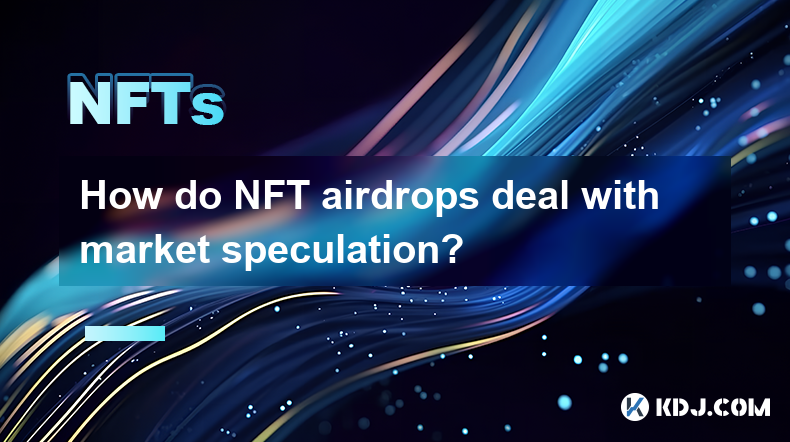
How do NFT airdrops deal with market speculation?
Apr 20,2025 at 10:28pm
NFT airdrops have become a significant phenomenon in the cryptocurrency space, often used as a marketing tool to distribute tokens or digital assets to a wide audience. However, they also introduce elements of market speculation that can impact the value and perception of NFTs. This article explores how NFT airdrops deal with market speculation, delving...
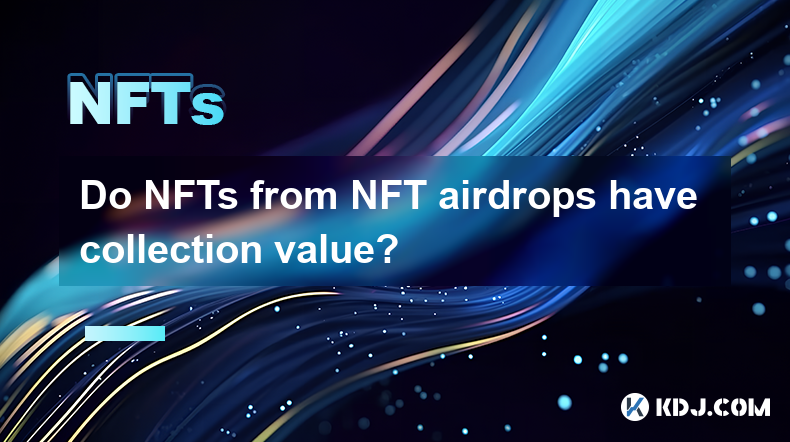
Do NFTs from NFT airdrops have collection value?
Apr 18,2025 at 11:49pm
NFTs, or non-fungible tokens, have become a significant part of the cryptocurrency ecosystem, and NFT airdrops are one way for projects to distribute these digital assets to their community. A common question that arises is whether NFTs received from airdrops have any collection value. To answer this question, we need to delve into various aspects of NF...
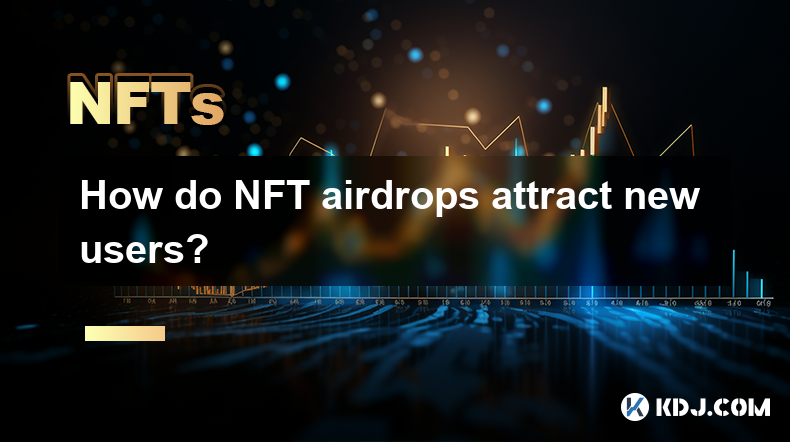
How do NFT airdrops attract new users?
Apr 21,2025 at 07:21am
NFT airdrops have become a popular strategy within the cryptocurrency community to attract new users and engage existing ones. By distributing free NFTs to a targeted audience, projects can create buzz, increase visibility, and foster a sense of community. This method leverages the allure of free digital assets to draw in participants who might not have...
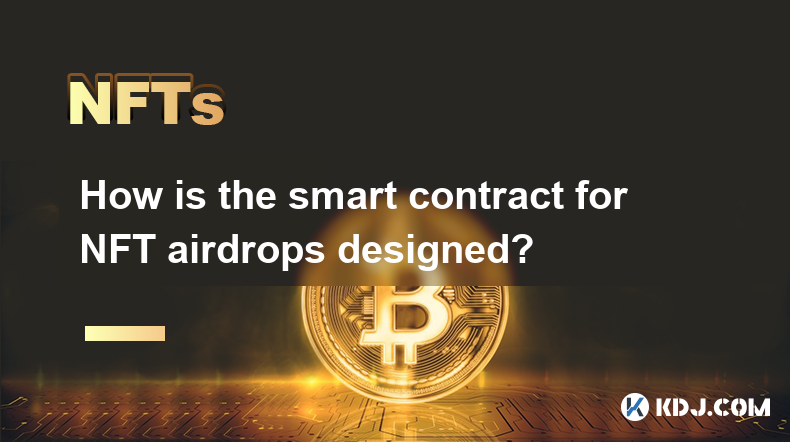
How is the smart contract for NFT airdrops designed?
Apr 18,2025 at 03:10am
The design of a smart contract for NFT airdrops is a complex process that requires careful consideration of various factors to ensure the airdrop is executed smoothly and securely. This article will delve into the intricacies of how such a smart contract is designed, focusing on key components, security measures, and the implementation process. Key Comp...
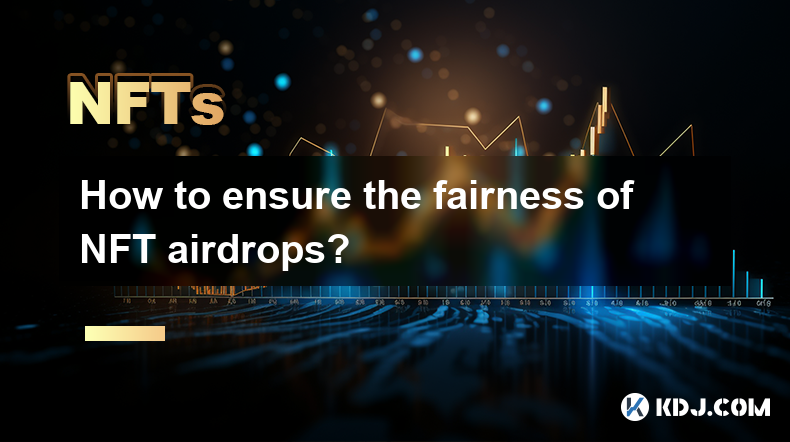
How to ensure the fairness of NFT airdrops?
Apr 24,2025 at 08:49am
Ensuring the fairness of NFT airdrops is crucial for maintaining trust and integrity within the cryptocurrency community. NFT airdrops, where non-fungible tokens are distributed freely to users, can be a powerful marketing tool, but they must be executed fairly to avoid accusations of favoritism or manipulation. This article explores various strategies ...

How to display and trade NFTs from NFT airdrops?
Apr 18,2025 at 04:42am
How to Display and Trade NFTs from NFT Airdrops? NFT airdrops have become a popular way for projects to distribute their tokens and engage with their community. If you've received NFTs through an airdrop, you might be wondering how to display and trade them. This article will guide you through the process step-by-step, ensuring you can showcase your NFT...

How do NFT airdrops deal with market speculation?
Apr 20,2025 at 10:28pm
NFT airdrops have become a significant phenomenon in the cryptocurrency space, often used as a marketing tool to distribute tokens or digital assets to a wide audience. However, they also introduce elements of market speculation that can impact the value and perception of NFTs. This article explores how NFT airdrops deal with market speculation, delving...

Do NFTs from NFT airdrops have collection value?
Apr 18,2025 at 11:49pm
NFTs, or non-fungible tokens, have become a significant part of the cryptocurrency ecosystem, and NFT airdrops are one way for projects to distribute these digital assets to their community. A common question that arises is whether NFTs received from airdrops have any collection value. To answer this question, we need to delve into various aspects of NF...

How do NFT airdrops attract new users?
Apr 21,2025 at 07:21am
NFT airdrops have become a popular strategy within the cryptocurrency community to attract new users and engage existing ones. By distributing free NFTs to a targeted audience, projects can create buzz, increase visibility, and foster a sense of community. This method leverages the allure of free digital assets to draw in participants who might not have...

How is the smart contract for NFT airdrops designed?
Apr 18,2025 at 03:10am
The design of a smart contract for NFT airdrops is a complex process that requires careful consideration of various factors to ensure the airdrop is executed smoothly and securely. This article will delve into the intricacies of how such a smart contract is designed, focusing on key components, security measures, and the implementation process. Key Comp...

How to ensure the fairness of NFT airdrops?
Apr 24,2025 at 08:49am
Ensuring the fairness of NFT airdrops is crucial for maintaining trust and integrity within the cryptocurrency community. NFT airdrops, where non-fungible tokens are distributed freely to users, can be a powerful marketing tool, but they must be executed fairly to avoid accusations of favoritism or manipulation. This article explores various strategies ...
See all articles























































































